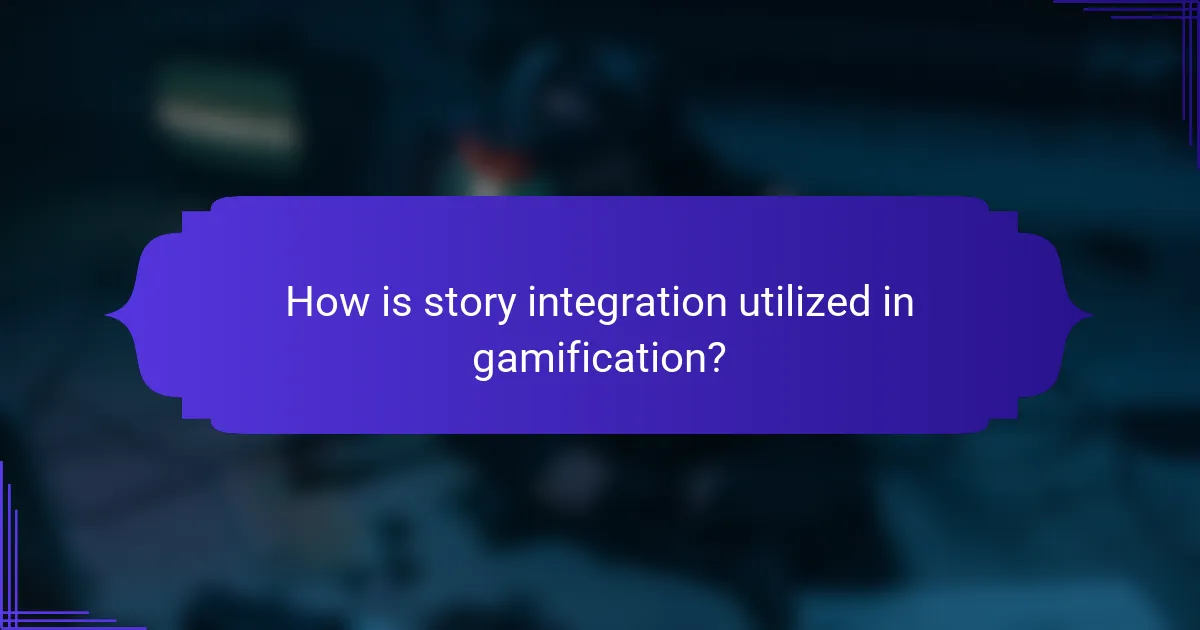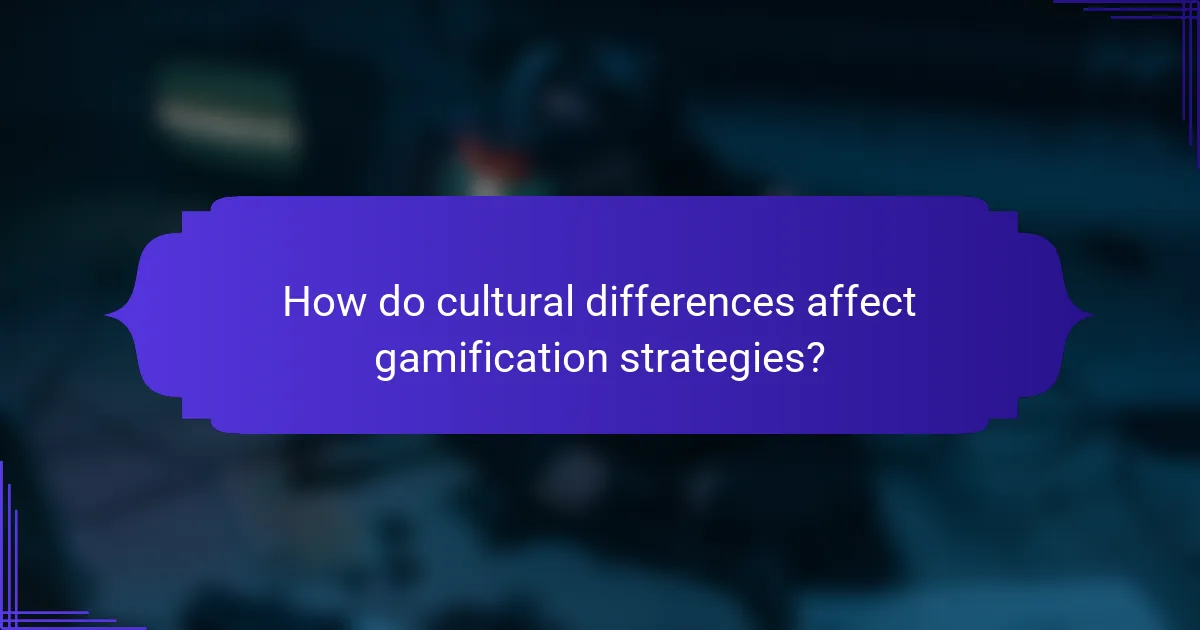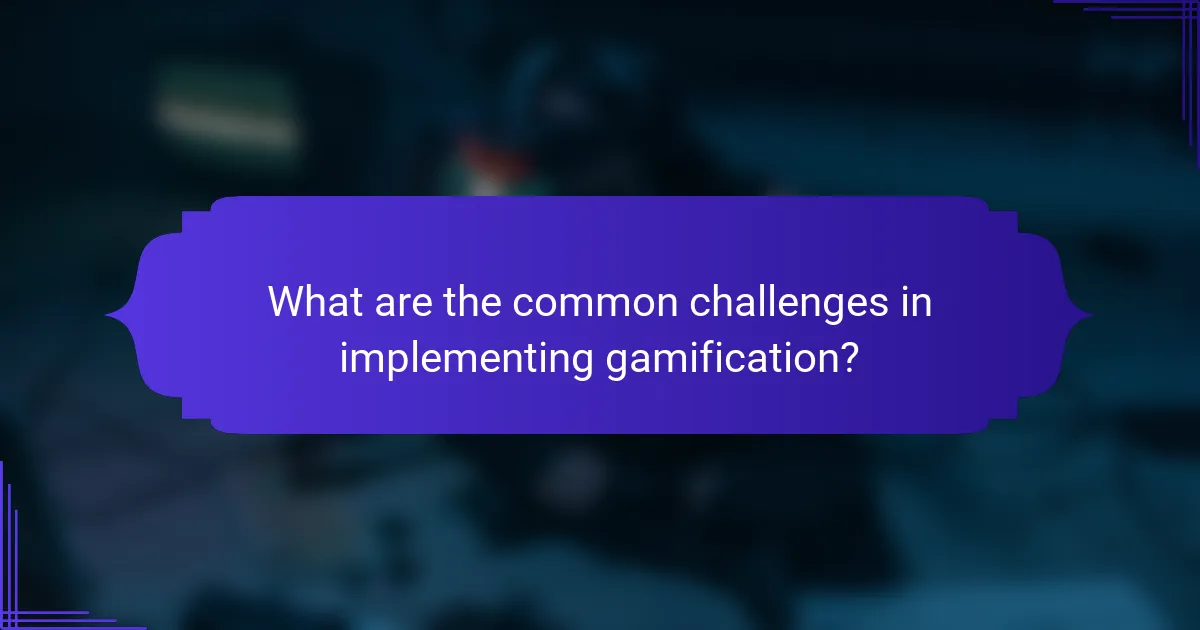Gamification elements play a crucial role in enhancing user engagement and retention. Key incentives, such as rewards and competition, motivate participation. Story integration creates immersive narratives that deepen emotional connections. Understanding cultural differences and addressing challenges in implementation are vital for maximizing the effectiveness of these strategies.

What are the key incentives in gamification?
Key incentives in gamification include rewards, competition, and social engagement. These elements motivate users to participate and enhance their experience. Rewards, such as points and badges, provide tangible recognition. Competition fosters a sense of achievement through leaderboards. Social engagement encourages collaboration and community building, enriching the overall gamified experience.
How do different incentives impact player motivation?
Different incentives significantly enhance player motivation by fostering engagement and satisfaction. Intrinsic incentives, like personal achievement, drive players to explore game mechanics. Extrinsic incentives, such as rewards or recognition, encourage continued play. A balanced combination of both types leads to higher retention rates. For example, incorporating story integration with these incentives creates a deeper emotional connection, enhancing overall player experience.
Which incentives are most effective across various platforms?
Gamification elements like rewards, challenges, and progress tracking are effective incentives across various platforms. These elements enhance user engagement and retention by providing tangible goals and feedback.
Rewards can include points, badges, or virtual goods, appealing to competitive players. Challenges often create a sense of achievement, motivating users to complete tasks. Progress tracking offers users insight into their performance, fostering a desire to improve and continue participating.
Platforms that successfully integrate these elements see higher user satisfaction and longer engagement periods. As a result, they can build a loyal user base and increase overall success.

How is story integration utilized in gamification?
Story integration enhances gamification by creating an immersive narrative that engages players emotionally. This connection increases motivation and encourages sustained participation. Effective story integration can lead to improved player retention, as players are more likely to return to experiences that resonate with them on a personal level. Additionally, unique storylines can differentiate a game from competitors, making it more memorable. As a result, incorporating compelling narratives is essential for maximizing the benefits of gamification elements.
What role does narrative play in enhancing player engagement?
Narrative significantly enhances player engagement by creating emotional connections and immersive experiences. A well-crafted story can motivate players to invest time and effort, as they feel part of a larger journey. This emotional investment often leads to increased retention and satisfaction. Integrating narrative elements into gameplay provides context for challenges, making them feel more meaningful. As a result, players are more likely to return, driven by their desire to see how the story unfolds.
How can story elements be tailored to different audiences?
Tailoring story elements to different audiences enhances engagement and relatability. Understand audience demographics, preferences, and motivations to craft relevant narratives. For instance, younger audiences may prefer fast-paced stories with humour, while older audiences might appreciate deeper character development and emotional resonance.
Incorporating interactive elements, such as choices that affect story outcomes, can increase immersion. Additionally, using familiar cultural references can make the story more relatable. Regularly gathering feedback from the audience helps refine story elements for better alignment with their interests.
Ultimately, adapting story elements ensures that they resonate with diverse audiences, fostering a stronger connection and enhancing overall player retention.

What strategies enhance player retention in gamified experiences?
Incorporating engaging gamification elements significantly enhances player retention. Key strategies include offering meaningful incentives, integrating immersive storylines, and providing consistent feedback.
Incentives, such as rewards and achievements, motivate players to continue participating. A well-crafted narrative keeps players emotionally invested, encouraging them to explore further. Regular feedback reinforces progress, ensuring players feel valued and engaged.
By combining these elements, gamified experiences can foster a loyal player base, ultimately improving retention rates.
Which metrics are essential for measuring player retention?
Key metrics for measuring player retention include daily active users, session length, churn rate, and retention rate. These metrics provide insights into player engagement and satisfaction.
Daily active users indicate how many players return to the game each day. Session length measures the time players spend in the game, reflecting their level of interest. Churn rate shows the percentage of players who stop playing over a specific period. Retention rate tracks the percentage of players who return after their first session, highlighting the game’s ability to keep players engaged.
Monitoring these metrics helps developers understand player behaviour and improve retention strategies.
How do gamification elements influence long-term user commitment?
Gamification elements significantly enhance long-term user commitment by creating engaging experiences. Incentives, such as rewards and achievements, motivate users to return. Story integration fosters emotional connections, making users feel invested in the narrative. These strategies lead to improved player retention rates, as users are more likely to engage with platforms that offer meaningful and enjoyable experiences.

How do cultural differences affect gamification strategies?
Cultural differences significantly influence gamification strategies by shaping incentives, narrative styles, and approaches to player retention. Understanding these variations allows developers to tailor experiences that resonate with diverse audiences.
For instance, in collectivist cultures, team-based rewards may be more effective than individual incentives. Conversely, individualistic cultures might respond better to personal achievements. Story integration also varies; narratives that emphasize community may appeal more in certain cultures, while others prefer personal heroism.
Moreover, player retention strategies can differ; cultures with a high uncertainty avoidance may favour clear instructions and structured gameplay, while those with lower avoidance might appreciate exploratory and open-ended experiences. Adapting gamification elements to these cultural nuances enhances engagement and satisfaction.
Which gamification elements resonate differently across regions?
Gamification elements resonate differently across regions due to cultural preferences and motivations. Incentives like rewards may be more effective in collectivist cultures, while individualistic societies might prioritise personal achievements. Story integration can vary, with narratives appealing more in regions valuing tradition and community. Player retention strategies must adapt to local engagement styles, emphasizing social interaction in some areas and competition in others. Understanding these nuances enhances gamification effectiveness globally.
What adaptations are necessary for effective global gamification?
Effective global gamification requires cultural adaptation, localized incentives, and inclusive narratives. Tailoring gamification elements to diverse audiences enhances engagement and retention.
Cultural adaptation ensures that the story resonates with local values and practices. Localized incentives, such as region-specific rewards, motivate participation. Inclusive narratives foster a sense of belonging among players from various backgrounds.
Incorporating these adaptations leads to higher user satisfaction and prolonged player retention. Gamification must evolve to meet the needs of a global audience for optimal effectiveness.

What are the common challenges in implementing gamification?
Implementing gamification often faces challenges such as lack of clear objectives, inadequate understanding of user motivations, and difficulty in maintaining engagement. These issues can hinder the effectiveness of incentives, story integration, and player retention strategies. For example, without defined goals, gamification elements may not resonate with users, leading to disengagement. Additionally, understanding diverse user motivations is crucial; a one-size-fits-all approach may fail to engage different player types. Finally, sustaining player interest over time requires continuous innovation and adaptation of gamification elements.
How can organizations overcome obstacles in gamification design?
Organizations can overcome obstacles in gamification design by focusing on clear incentives, integrating engaging stories, and enhancing player retention strategies.
Firstly, establishing meaningful incentives is crucial. Rewards should align with player motivations, whether they are intrinsic, like personal growth, or extrinsic, such as tangible rewards.
Secondly, story integration can enhance user experience. A compelling narrative can make tasks feel more relevant and engaging, increasing emotional investment in the gamified process.
Lastly, player retention can be improved through regular feedback and community engagement. Continuous interaction keeps players motivated and invested, reducing drop-off rates.
What are the potential pitfalls to avoid in gamification projects?
To avoid pitfalls in gamification projects, focus on aligning game mechanics with user motivations. Misalignment can lead to disengagement.
1. Lack of clear objectives can confuse users about the purpose of the gamification elements.
2. Overemphasis on rewards may diminish intrinsic motivation over time.
3. Ignoring user feedback can result in a disconnect between the game design and user experience.
4. Failing to integrate a compelling narrative can weaken emotional engagement and immersion.
5. Neglecting to analyze data can prevent optimization of player retention strategies.
6. Underestimating the importance of accessibility can exclude potential users.
What innovative approaches can improve gamification effectiveness?
Incorporating innovative approaches can significantly enhance gamification effectiveness. Strategies include personalized incentives, immersive story integration, and continuous player engagement techniques.
Personalized incentives, such as tailored rewards, increase motivation and align with individual player preferences. Immersive story integration captivates players, making experiences more engaging and memorable. Continuous player engagement techniques, like regular feedback and community interaction, foster loyalty and retention.
These methods leverage unique attributes of gamification, such as adaptability and interactivity, to create a more impactful experience.
What best practices should be followed for successful gamification?
Successful gamification requires integrating incentives, storytelling, and strategies for player retention.
Incentives should be varied and aligned with user motivations to enhance engagement. Story integration creates an immersive experience, making the gameplay relatable and enjoyable. Player retention strategies, such as regular updates and community involvement, foster loyalty and encourage ongoing participation.
Implementing these elements effectively can lead to a more engaging and rewarding gamification experience.
